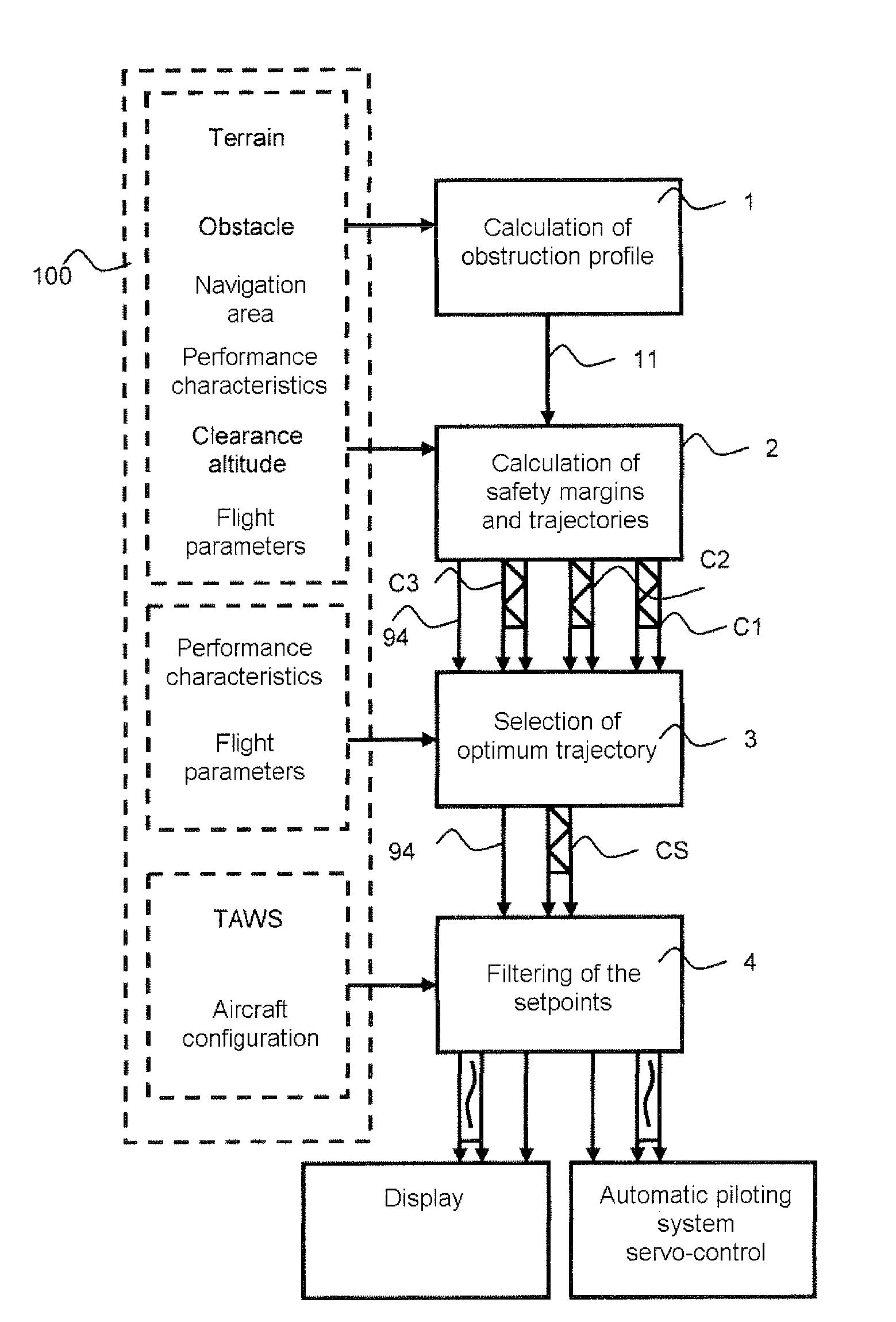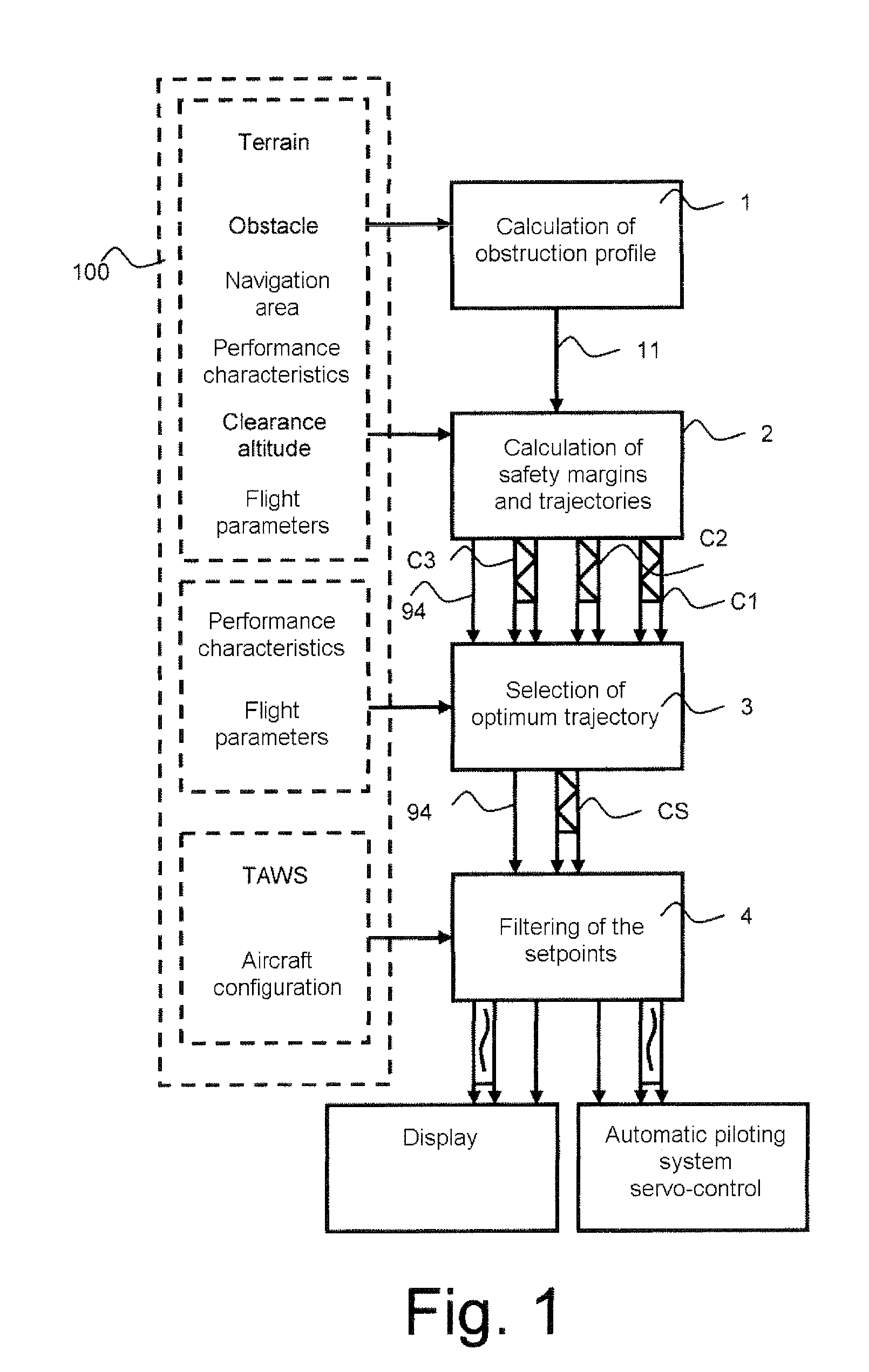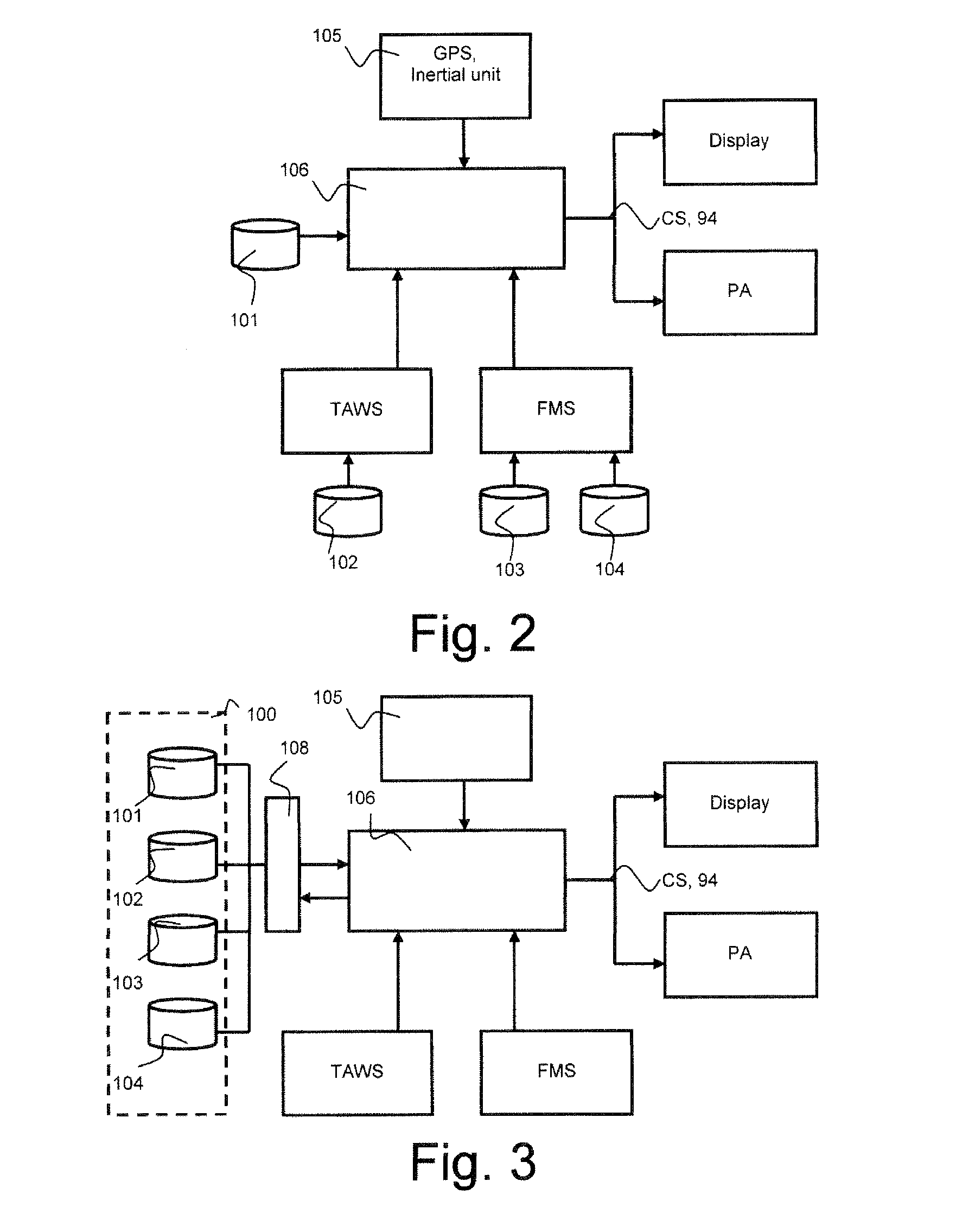Air Navigation Aid Method and System Making it Possible to Maintain Vertical Margins
a navigation aid and vertical margin technology, applied in vehicle position/course/altitude control, process and machine control, instruments, etc., can solve the problems of not allowing the difference relative to this threshold to be calculated or represented, and the device cannot take into account the instantaneous vertical climb capability of the aircraft, so as to improve the flight safety
- Summary
- Abstract
- Description
- Claims
- Application Information
AI Technical Summary
Benefits of technology
Problems solved by technology
Method used
Image
Examples
Embodiment Construction
[0033]The aim of the invention is to enhance the flight safety in situations requiring small vertical separations to be maintained with respect to the relief or artificial obstacles. To achieve this objective, the method implements a succession of steps represented by FIG. 1. A first step for calculating a vertical obstruction profile 92, a second step for calculating a vertical safety margin 94, safety trajectories 801, 802, 803 and associated setpoints C1, C2 and C3, the essential characteristic of which is to include a single point of contact with the vertical obstruction profile 92 increased by the vertical safety margin 94, a third step for selecting the safety trajectory CS making it possible to keep an optimum safety margin with respect to the obstruction profile, a fourth step for filtering the setpoints in order for the piloting indication that has to be displayed not to show high variations over a short duration, and finally, a fifth step for displaying the flight setpoint...
PUM
 Login to View More
Login to View More Abstract
Description
Claims
Application Information
 Login to View More
Login to View More - R&D
- Intellectual Property
- Life Sciences
- Materials
- Tech Scout
- Unparalleled Data Quality
- Higher Quality Content
- 60% Fewer Hallucinations
Browse by: Latest US Patents, China's latest patents, Technical Efficacy Thesaurus, Application Domain, Technology Topic, Popular Technical Reports.
© 2025 PatSnap. All rights reserved.Legal|Privacy policy|Modern Slavery Act Transparency Statement|Sitemap|About US| Contact US: help@patsnap.com



